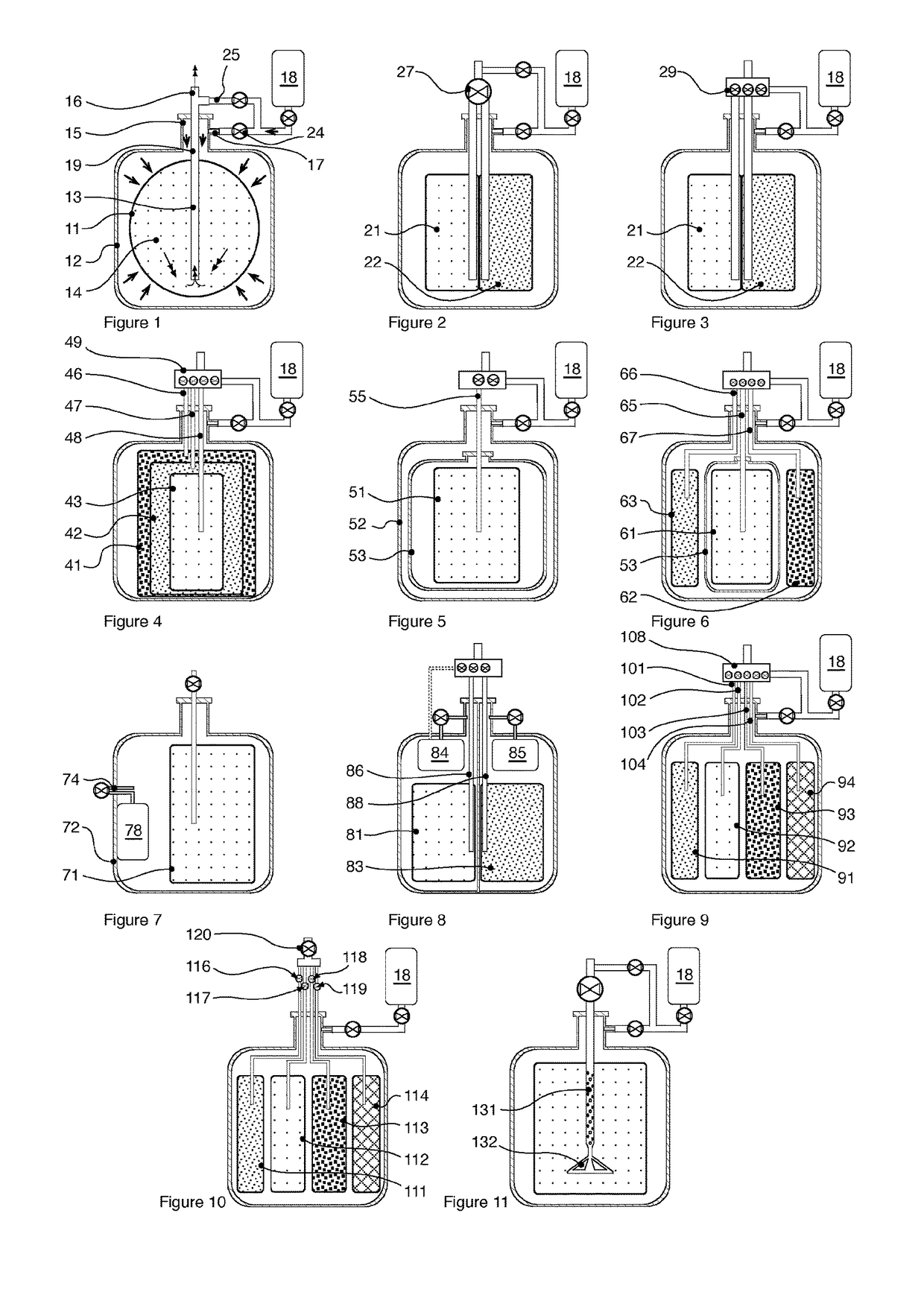Fluid dispensor with isolation membrane
a technology of isolation membrane and fluid dispensing device, which is applied in the direction of packaging, liquid transferring device, lining/internal coating, etc., can solve the problems of water cloudy, visual unappealing, and disturbance or otherwise adverse effects, and achieves bolstering stiffness and rigidity, and reducing volume
- Summary
- Abstract
- Description
- Claims
- Application Information
AI Technical Summary
Benefits of technology
Problems solved by technology
Method used
Image
Examples
example 1
[0131]A dispenser configured for pressurised content delivery without cross-contamination, by isolation of content to be dispensed from a pressurisation, pressure transfer or delivery medium, through the intervention or intermediary of a flexible barrier membrane.
example 2
[0132]A pressure vessel or container, with an input or charge port, for connection to or mounting a pressurised gas cylinder to charge the housing interior; a liner or liner bag to hold content to be dispensed, for location within the container; a content output or discharge port, connected to the liner bag; an output selector, an output regulator or control valve, a gas admission or bleed valve for contents delivery gas injection or aeration.
example 3
[0133]A housing, a content storage chamber within the housing, an internal partition membrane, across or to one side of the storage chamber, as a sub-division between a sub-chamber for contents to be dispensed
[0134]and a sub-chamber for air or other gas under pressure, to displace the partition and in turn contents to be dispensed.
PUM
 Login to View More
Login to View More Abstract
Description
Claims
Application Information
 Login to View More
Login to View More - R&D
- Intellectual Property
- Life Sciences
- Materials
- Tech Scout
- Unparalleled Data Quality
- Higher Quality Content
- 60% Fewer Hallucinations
Browse by: Latest US Patents, China's latest patents, Technical Efficacy Thesaurus, Application Domain, Technology Topic, Popular Technical Reports.
© 2025 PatSnap. All rights reserved.Legal|Privacy policy|Modern Slavery Act Transparency Statement|Sitemap|About US| Contact US: help@patsnap.com



